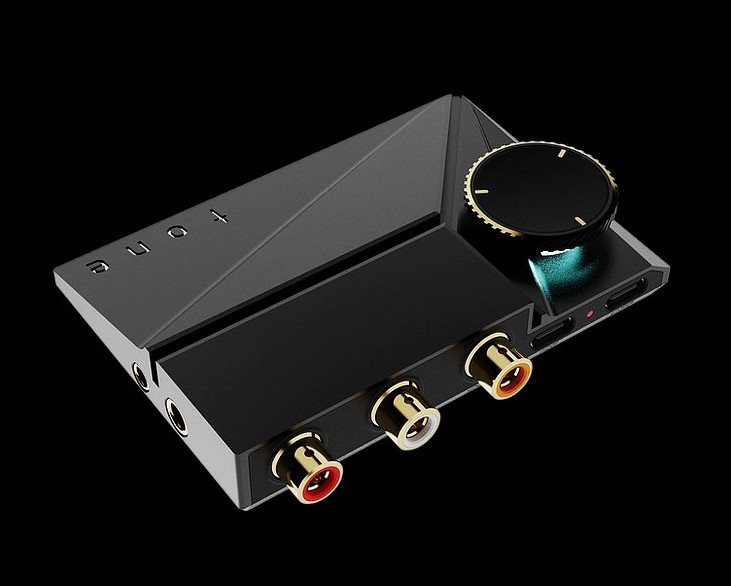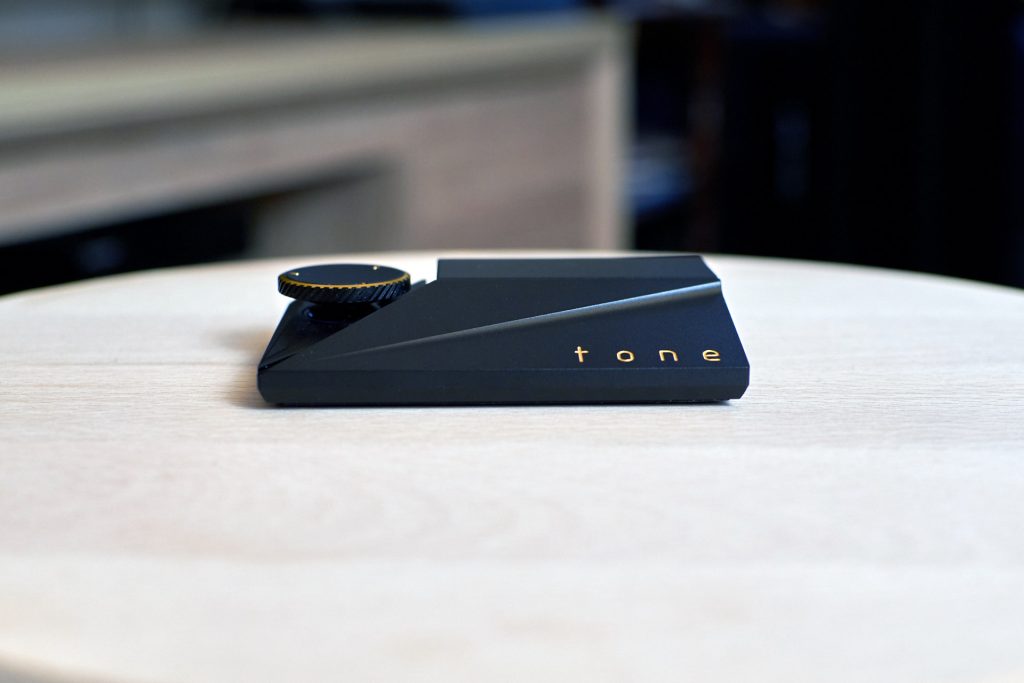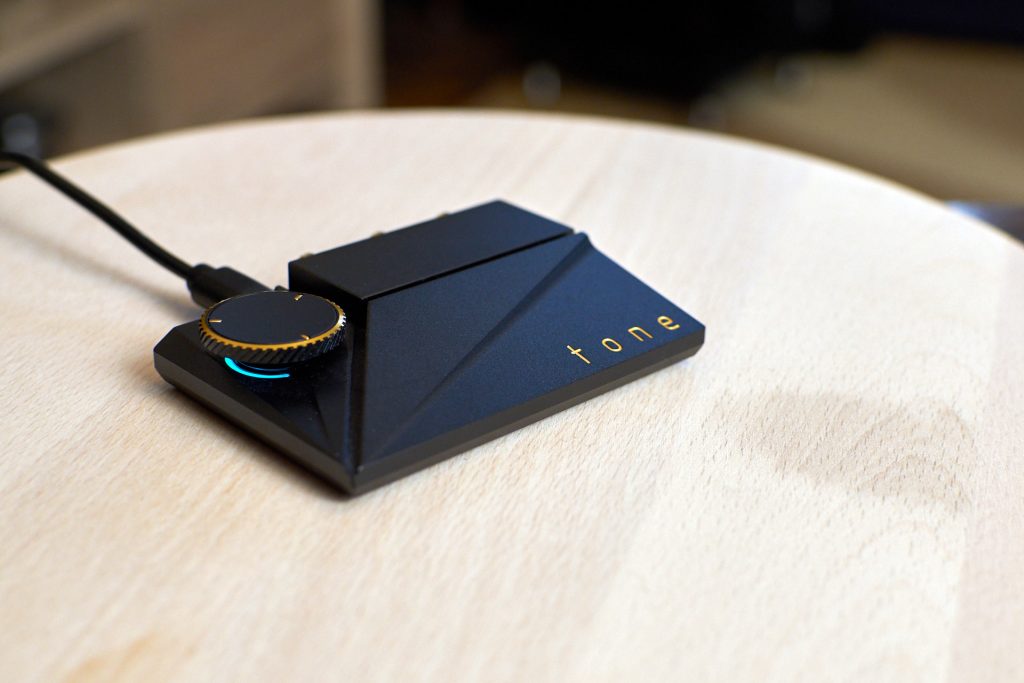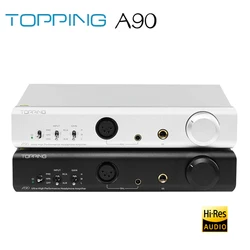Khadas Tone 2 Pro is here, and in case you missed it, it’s a successor of the original DAC called Khadas Tone Board. As you might have noticed already, Board is omitted from the name this time around, and the reason is pretty simple – Tone 2 Pro is a full device and not just a board without a casing. Khadas Tone Board was actually intended to be used as a HAT to Khadas’ own VIM boards, computing units similar to Raspberry Pi, but it was also capable of functioning separately, and that’s how most people actually used it. It became very popular as a low-budget DAC, and I personally praised it when it was released as few DACs at that price range could stand against it.
Khadas took notice of the trend and decided to abandon the board form in favor of a fully finished product. In the process, the price took a hike from 99 to 199 USD, but Tone 2 Pro offers much more than the original Tone Board. So let’s dig in and see what’s new and improved and if the price difference is justified.
Build and Connectivity
Khadas Tone 2 Pro is a tiny device, and its footprint is not much bigger than that of a credit card. Yet, Khadas has found a way to pack it with connectivity options and features. First of all, unlike the original Tone Board, Tone 2 Pro packs both the line-out and the headphone amplifier section. Secondly, a balanced connection option is added. My only complaint about its form factor is that Tone 2 Pro is a lightweight product, so using it with heavy and/or stiff cables is only possible if you add some sort of weight on top of it to prevent it from being pulled by the cables.
Now let’s talk about the line-out section first. This time around we have a selection of both single-ended RCA outs, as well as balanced output through the very same RCA connectors. Wait, what? RCA is not meant for a balanced connection, you say, and you’re entirely correct. But Khadas went with custom-made RCA connectors that include both single-ended pins, as well as the balanced ones. It’s all straightforward when it comes to the single-ended part of the story as you’re free to use any existing RCA interconnect cables on the market. But if you want to take the advantage of balanced output, you have to use a custom RCA to XLR adapter, Khadas made especially for this device and its custom balanced pins hidden inside of RCA connectors. I’m not particularly fond of anything custom-made for a specific device, but there you go – a cost-saving solution I suppose.
Fortunately, things are much more straightforward when it comes to headphone outputs. We have a 3.5 mm connector on the single-ended out, and 4.4 mm Pentaconn on the balanced out. The volume knob provides the hardware volume control over these outs, not influencing a fixed-level line-out. So Tone 2 Pro is a DAC with an integrated headphone amplifier, but it’s not meant to be used as a preamp since it doesn’t have a variable line-out.
When it comes to digital inputs, you can choose between a USB-C and Coaxial SPDIF. There’s a second USB-C port too, and this one can be used in two ways. The first one is to use it as a separate power supply inlet, to hook a low noise power supply to Tone 2 Pro which will help its sound fidelity. The second function is to connect an external I2S Bluetooth module if you desire Bluetooth connectivity. It’s one or the other.
Specs and Features
Khadas Tone 2 Pro is based on the exact same ESS Sabre ES9038Q2M DAC chip as the original one. However, file support took an upgrade with Tone 2 Pro supporting the usual suspects such as PCM and DSD, but adding a full hardware MQA unfolding into the mix (MQA is an advanced hi-res compressing algorithm, it’s lossy in its nature and mostly used in streaming services. It requires licensed hardware to be fully unfolded (decompressed)). I never cared much about MQA personally but it’s present on Tone 2 Pro so I’ve tested it using Tidal and it works just fine.
Tone 2 Pro also lets you choose between several digital filters, but I won’t go into details about it. Try them for yourself and decide if you hear the difference and if you do, which is your favorite one. When it comes to the headphone out, you can switch between low and high gain mode. That said, navigating through settings is a bit tricky. Double click volume knob downwards like a joystick on a gamepad will circle through different settings. Once you get into each of these settings, turning the volume knob will change the state and you double-click the knob to go to the next one. There is no display here so everything relays on RGB color-coding. Because of that, the user manual is necessary to know what you’re doing. This sort of solution is a bit finicky and I often found myself reaching for the manual just to remind myself what’s what. That said, most of these settings are something we’ll play with in the beginning, but once we set everything to our liking, the volume knob will revert to its default function.
Sound (line-out)
Using a pair of RCA cables I connected the Tone 2 Pro to my integrated amplifier and speakers. Its DAC section treated me with a well-balanced sound signature, with no frequency region going out of line and asking for attention. The bassline is precise and nimble, so every bass note feels neat, starting and ending as quickly as the material requires. Some listeners may wish for a bit more weight and slam, especially for heavy electronic beats, but as I mostly listen to the music with acoustic instruments, I really appreciated the precision and speed. Going up the frequency spectrum, I find midrange to be very informative and naturally voiced. Now, I don’t often use word naturally, but the situation requires it this time because Tone 2 Pro is doing a great balancing act between the fullness of the tone, its edges, and its texture. Everything blends seamlessly into an informative and naturally voiced unity without added warmth or sharpness. The highest spectrum feels ever so slightly tame. This means that all the information is there but the air around the instrument is a tad darker and not as airy as with some opponents. All of these combine into a precise and quick sound, but without any sharpness or harshness to it.
When it comes to sound-staging, Tone 2 pro develops a modestly wide stage, but what it lacks in sheer width it makes up for with other qualities. First of all, the layering and imaging inside of that soundstage are top-notch for the class. Focus is great so every instrument is firmly rooted in its place, clearly separated from the other instruments on the stage. In some busy tracks where lesser DACs could flatten and blur the image, Tone 2 Pro keeps its composure and always serves a well-controlled and organized soundstage.
Khadas Tone 2 Pro is a lively performer when it comes to micro-dynamics and being quick on its feet, but it’s not the one to sweep you off your feet with huge dynamics swings and rumbling notes. As I mentioned before, the bassline is nimble but doesn’t offer much kick and slam. Personally, I’d take the neat and organized sound of Tone 2 Pro over flashy but loosy presentation any day, but then again, that boils down to your personal taste and music preferences.
I haven’t had a chance to test the balanced line-out section as 1. I don’t own a balanced amplifier, and 2. Khadas’ proprietary RCA to XLR cables are not included in the box, but purchased separately instead.
Sound (headphone-out)
Now, I’ll try to keep this one short as the overall sound signature perfectly matches the one already described in the line-out section. Instead, I’ll focus on the headphone output specifics.
Regarding power, I found the low gain mode to be just enough for my Hifiman HE4xx, but with lower-level recordings, I felt like high gain was giving me much more headroom and all the juice these planars need. Switching to higher gain I didn’t notice any significant loss of fidelity so I kept it as my default during the testing. I feel that the power handling of Tone 2 Pro is not spectacular but it will be sufficient for the most moderately hungry headphones out there. That said, there’s an impedance limit you should be aware of, and it’s 150 Ohms over the single-ended out, and 300 Ohms over the balanced output. Stay within these boundaries and Tone 2 Pro will treat you with a lively and resolving presentation.
Move from single-ended to a balanced out and the increase in the drive is immediately noticeable. With it, the whole soundstage spreads wider and instrument separation improves. Perfectly fine single-ended output now feels somewhat clogged and melted-down in comparison. So if you have a pair of headphones and you decide to buy Tone 2 Pro, do yourself a favor -get a pair of balanced cables as well and thank me later.
Adding a Low Noise Power Supply
As with most DACs that are powered with a 5 V DC (or 12 V, it doesn’t matter), the quality of the sound to some degree depends on the quality of the power supply used. Sure, it can function perfectly fine hooked to a PC port or a phone charger, but give it anything better and you’re going to yield some sonic benefits. I personally tried it with price inappropriate Allo Shanti linear power supply, as that was the one I had at hand. Khadas Tone 2 Pro treated me with a darker background, as well as with the more energetic presentation and clearer edges. Of course, something such as iFi iPower low noise switching power supply would be more appropriate at this price point, but make no mistake, the power supply is as much a part of your device as it is its DAC chip.
Comparisons
Topping E30 is one of the most resolving DACs at this price range. It can throw a bit wider soundstage, but the instruments are arranged in a flatter plane and they’re not as well separated. That said, E30 offers slightly more air up top but has a slightly thinner and dryer presentation overall. Tone 2 Pro is more focused, with better layering, and it offers a slightly fuller and darker tone signature. All said and done, I’d give this one to the Tone 2 Pro.
Loxjie D30 (review coming soon) offers a meatier bass-line and somewhat punchier presentation overall, more sparkly on the top too. That said, it can’t match Tone 2 Pro’s bass quickness and instrument separation. As a result, it sounds fuller and punchier but somewhat more diffused and hazy when it comes to imaging. The same is true for both line-out and headphone-out.
Topping L30 is a separate headphone amplifier that offers more drive and kick. Adding it to Khadas’ line out and using it as an external amp adds a level of authority and grunt to the bassline that the internal Tone 2 Pro’s amp section simply can’t match.
Finally, stacking E30 and L30 together will keep that same drive and grunt of L30, but as well as some of that airy but slightly diffused and flat character of the E30. Tone 2 Pro keeps tighter focus and speedy bassline as the advantage and it can also layer better if used in balanced mode. Announcing a clear winner at this point is next to impossible as I found myself preferring one or the other depending on the material being played.
Conclusion
The original Khadas Tone Board was a hoot when it first appeared, rocking a well-balanced, full-bodied sound while most DACs at the same price point were still trying to impress with the overly sharp and edgy presentation. Few years down the road to this moment, the competition is fierce with the likes of Topping, SMSL, iFi, etc. all upping their game and bringing considerably better products in the up to $200 range. But Khadas didn’t sleep either, instead, they produced a feature-packed product with some class-leading traits. Now, I could sure find a competing device that can surpass its sonic capabilities in some areas, but looking at it as a whole I’m hard-pressed to think of anything that’s as balanced and as natural-sounding as Khadas Tone 2 Pro. So if tiny form factor and slightly quirky controls are not something that pushed you away, then Khadas Tone 2 Pro is a DAC/Headphone AMP worth serious consideration.
| KHADAS TONE 2 PRO – CHARACTERISTICS |
|
DAC chip: ESS Sabre ES9038Q2M Format support: PCM up to 32 bit / 384 kHz, DSD up to DSD512 XMOS XU216 processor for full hardware MQA decoding Line out: Single-ended RCA Balanced over custom RCA solution Headphone out: Single-ended 3.5 mm (up to 150 Ohm headphones) Balanced 4.4 mm (up to 300 Ohm headphones) Power supply: 5 VDC, not included |










Many thanks for all your reviews, but the more I read, the less I know which DAC is for me 🙂
Khadas Tone 2, Topping D10S, IFI Zen, Topping E30, Schiit Modi 3 … hard to find the right one !
Yeah, too much information can be overwhelming, especially when we add a timeline into account (which one is or was the best but it’s not anymore).
So I’ll try and make this one easy for you. Wait for tomorrow’s review of Loxjie D30 and weigh between that one and Tone 2 Pro. They’re both awesome and have different strengths, but most importantly they’re both better than anything else that came before (and that you’ve just mentioned) in a sub 200 category.
Hope this helps. 🙂
As I commented on YouTube, thanks for you good work especially making the comparison so clear ! Also I watched a lot of different reviewer. Really like your style and how you express the sound quality of the device. It makes more sense than just technical details 🙂
Just so you know, I will buy a Loxjie D30 based on your reviews! Thanks.
Just got mine in the mail today (Tone2Pro). However, the instruction manual is for Windows. Found some online tutorials for set-up with a Mac but running into one obstacle after another. Cannot open tone_dfu_tool_macos since: ‘it is from an unidentified developer’
then, when I went to enter this in terminal: wget https://dl.khadas.com/products/tone2/dfu_tool/tone_dfu_tool_macos
mac responds: zsh: command not found: wget
definitely out of my league / depth